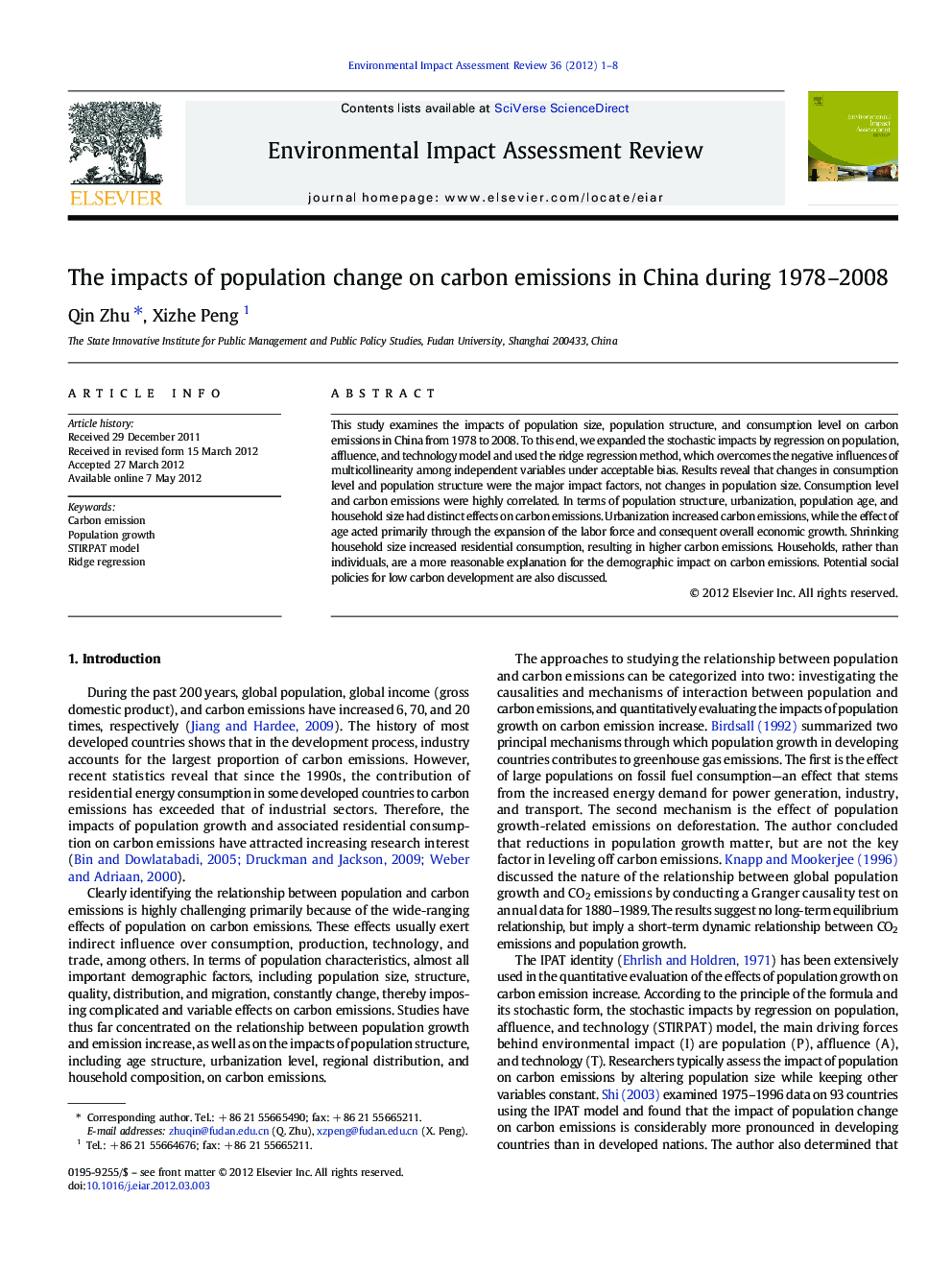| Article ID | Journal | Published Year | Pages | File Type |
|---|---|---|---|---|
| 1052843 | Environmental Impact Assessment Review | 2012 | 8 Pages |
This study examines the impacts of population size, population structure, and consumption level on carbon emissions in China from 1978 to 2008. To this end, we expanded the stochastic impacts by regression on population, affluence, and technology model and used the ridge regression method, which overcomes the negative influences of multicollinearity among independent variables under acceptable bias. Results reveal that changes in consumption level and population structure were the major impact factors, not changes in population size. Consumption level and carbon emissions were highly correlated. In terms of population structure, urbanization, population age, and household size had distinct effects on carbon emissions. Urbanization increased carbon emissions, while the effect of age acted primarily through the expansion of the labor force and consequent overall economic growth. Shrinking household size increased residential consumption, resulting in higher carbon emissions. Households, rather than individuals, are a more reasonable explanation for the demographic impact on carbon emissions. Potential social policies for low carbon development are also discussed.
► We examine the impacts of population change on carbon emissions in China. ► We expand the STIRPAT model by containing population structure factors in the model. ► The population structure includes age structure, urbanization level, and household size. ► The ridge regression method is used to estimate the model with multicollinearity. ► The population structure plays a more important role compared with the population size.
